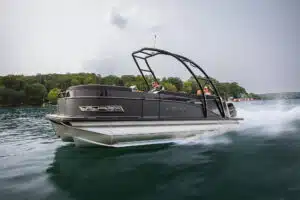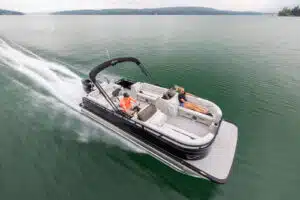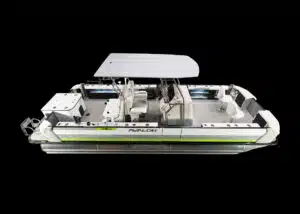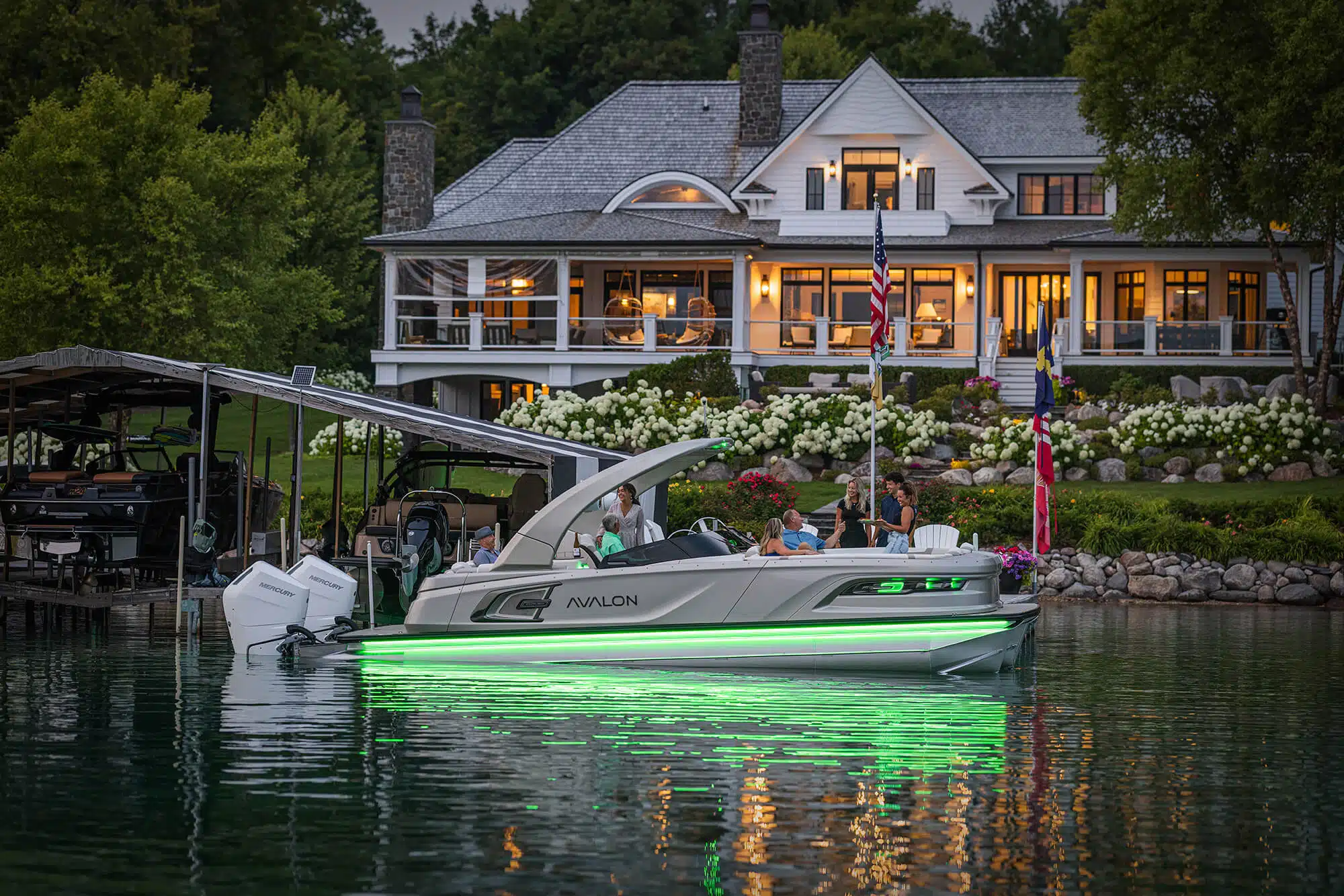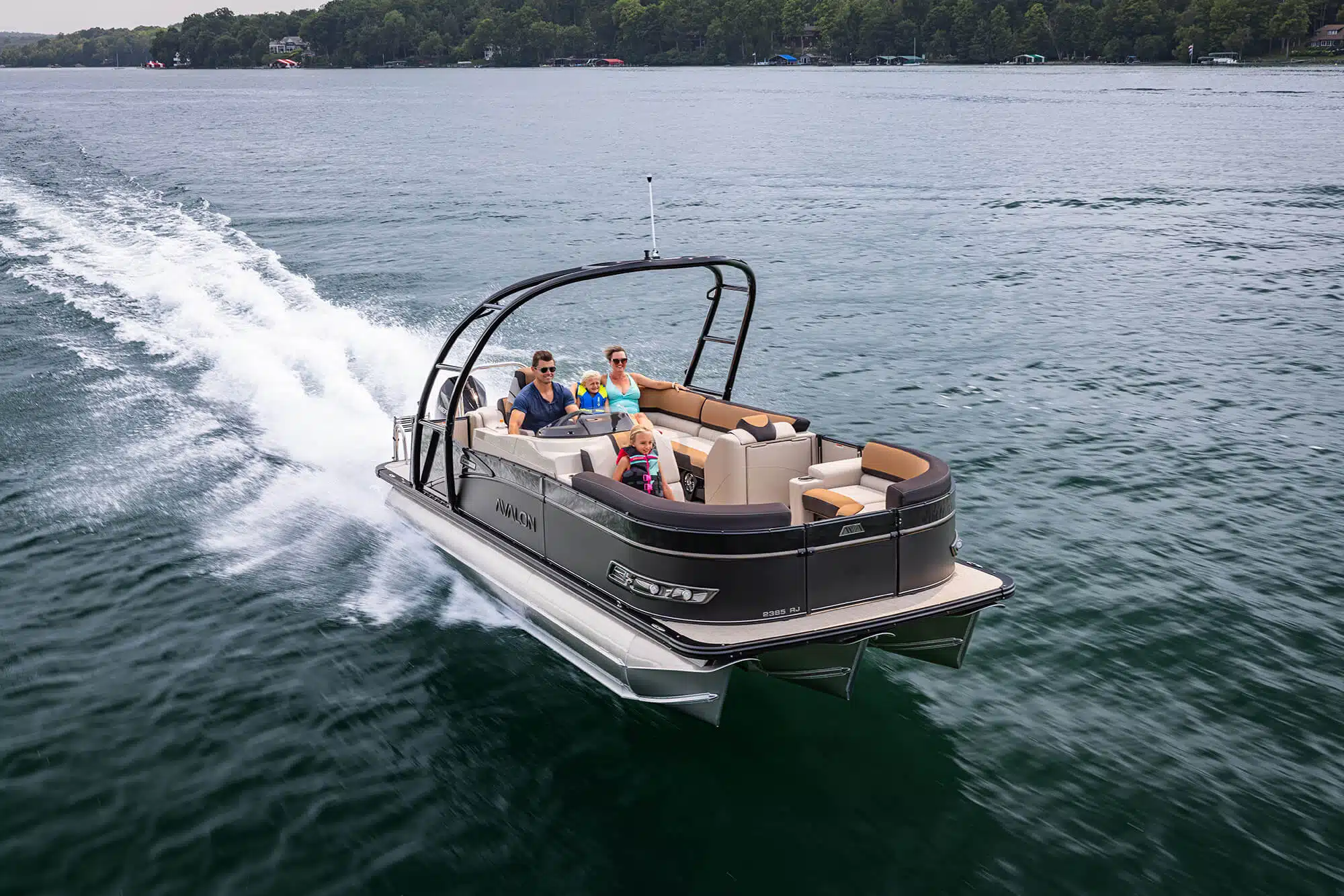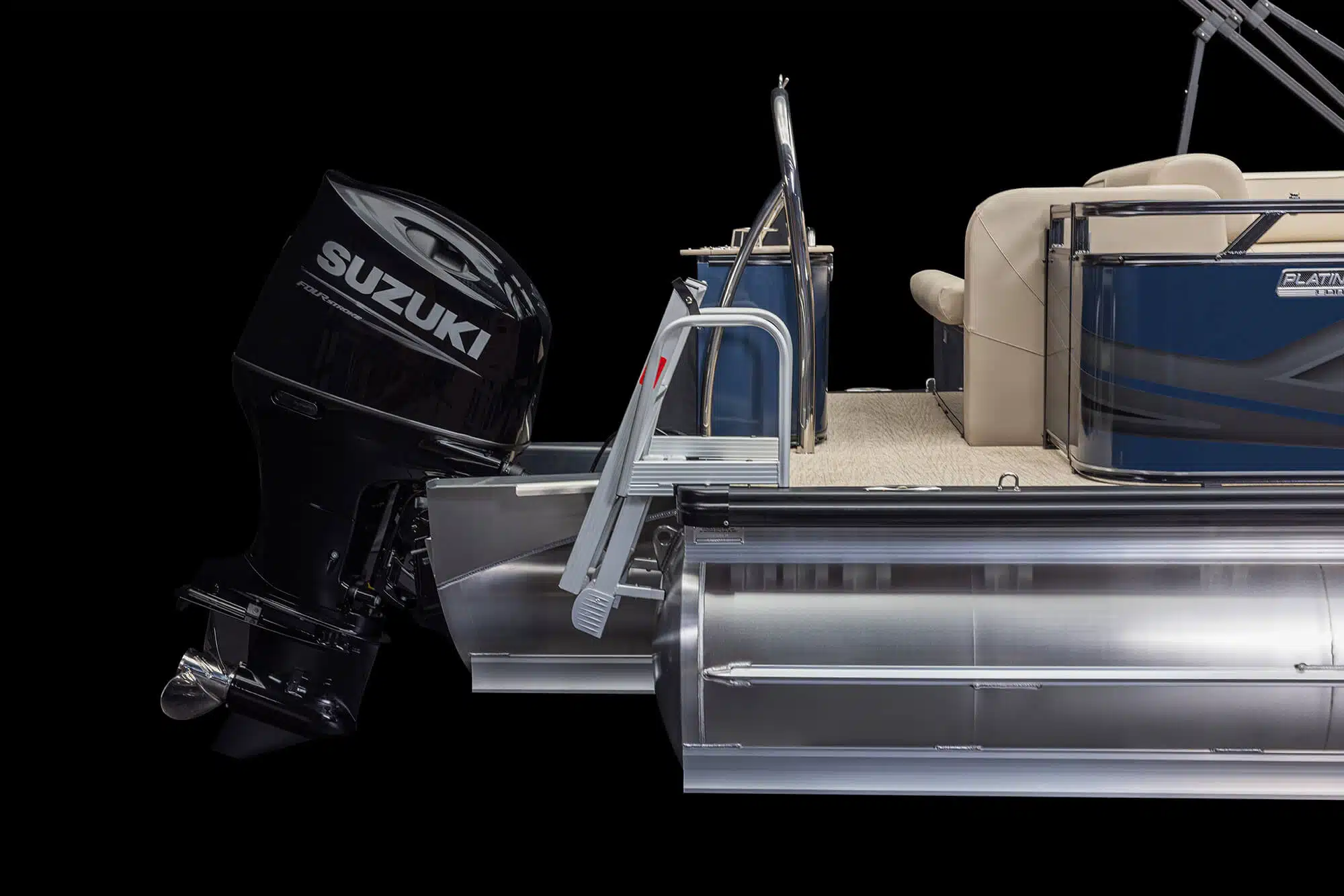How to Winterize a Pontoon Boat
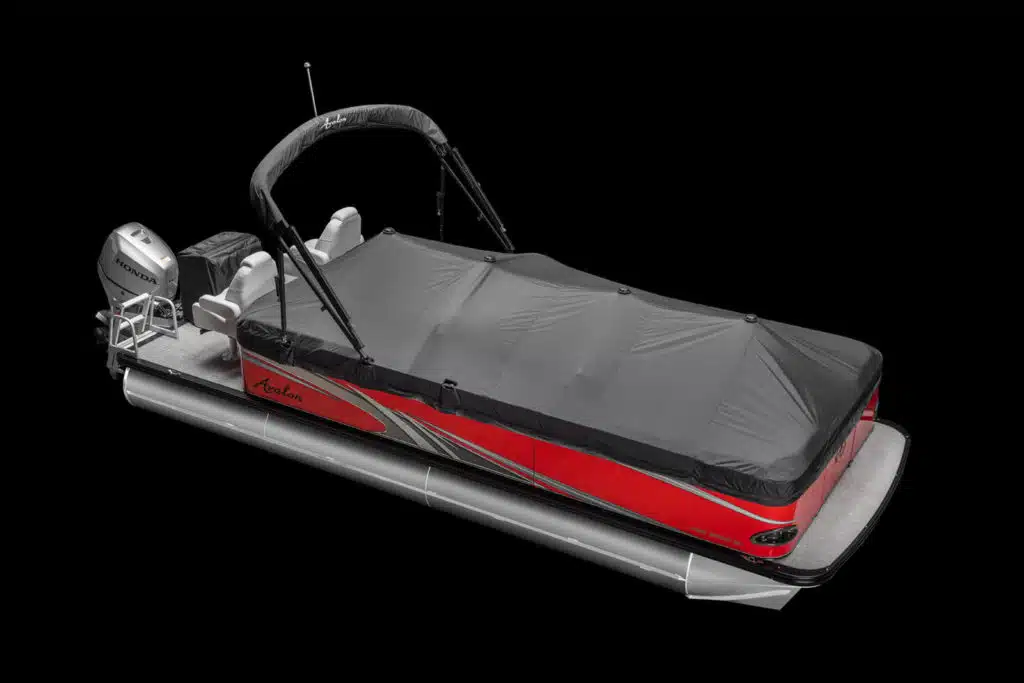
Preparing your pontoon boat for the winter months is absolutely essential to protect your investment and to ensure that your boat is in great shape and ready for use in the spring. Because there are so many factors to consider, it is usually a good idea to hire a professional to winterize and/or store your pontoon boat, and many of our dealers offer this service. Please locate a dealer near you and inquire about this service.
Should you decide to go it alone, we’ve assembled these basic tips to help you winterize your boat and keep it in top condition during the off-season.
Get it clean
It is important to thoroughly clean your pontoon boat inside and out before storing it for the winter. Any dust, grime, or barnacles that are on the exterior will be much easier to clean now than after winter. Once you have the outside clean, you may want to apply a polish to create a protective barrier from rust and dirt.
The interior of the boat should also be cleaned. Make sure to get all surfaces nice and clean and let them dry thoroughly before storing. Teak, carpet, and vinyl can breed mildew, especially when the pontoon boat is covered and there is little ventilation.
Remove equipment
You should remove any miscellaneous equipment from the boat. Flotation devices, skis, tubes, wakeboards, towels, and fishing equipment can trap moisture and cause mildew.
Any electronic equipment should also be removed and stored indoors to protect it from cold temperatures, moisture buildup, and theft.
Prepare your engine
Note: Please consult your engine’s owner’s manual for specific instructions. The following are general guidelines. Your engine will be sitting dormant for a while, so it’s a good idea to spray fogging oil into the carburetor and down the spark plug holes. Remove the spark plugs, spray the fogging oil (following the directions carefully), and replace the spark plugs without connecting the wires. This will provide a protective coating after all of the oil has settled to the bottom of the engine.
Then, fill the gas tank. Empty space inside the tank leaves room for condensation as the temperature changes. Your gas tank should be at least ¾ full before storing it for the winter. Also, make sure to add a fuel additive and a fuel stabilizer to the tank. The fuel additive ensures that the gas doesn’t go stale over the winter, while the fuel stabilizer prevents the build-up of gum and varnish.
This is also a good time to replace the oil and change the oil filters. Dispose of any unused oil at an authorized recycling center.
Use Antifreeze
If your boat is equipped with an inboard/outboard, drain the coolant from the engine and replace it with non-toxic, propylene glycol-based antifreeze. Many antifreeze products available contain an ethylene glycol base, which can release toxins into the water. Most manufacturers agree that the propylene variety is better for your engine too.
Grease and Lubricate
Find the grease fittings of your pontoon boat. It will most likely be located within the steering mechanism area. After you’ve found it, apply a high-quality marine lubricant to it. Performing this process ensures that the fittings don’t rust, corrode, or become oxidated. Make sure you follow specific instructions from your owner’s manual when greasing and lubricating your fittings. This process might vary depending on the type of pontoon boat you own.
Cover it up
You should always cover your pontoon boat for the winter, especially if you plan to store it outdoors. Keep in mind that rain and snow can build up and create pooling on the cover so it is important that the cover be very secure and that it is well supported to direct show and water down and away from the boat. For best results, take your boat to a dealer to have your boat securely covered & winterized.
If you choose to use a cover or tarp, make sure that it is properly sized and fitted to your boat. If you’re storing your boat indoors, the quality of the cover is not as important because its main function will be to keep moisture and dirt out of the boat. For outdoor storage, a quality, fitted cover is recommended.
Another option is to shrink-wrap your boat. Shrink Wrapping provides the best protection against moisture and you don’t have to worry about the cover sagging or blowing off. Shrink-wrapped boats can withstand heavy amounts of snow and rain. This job can be done yourself, but it requires special tools and knowledge, so it may best be left to an expert.
Removing the battery
If you plan to store your pontoon boat out of the water, you should disconnect the battery and store it someplace cool, but remember to fully charge it beforehand, and to top off the charge throughout the winter.
If you are storing your pontoon boat in the water, you should keep the battery onboard and charged so that the bilge pump will continue functioning if needed




